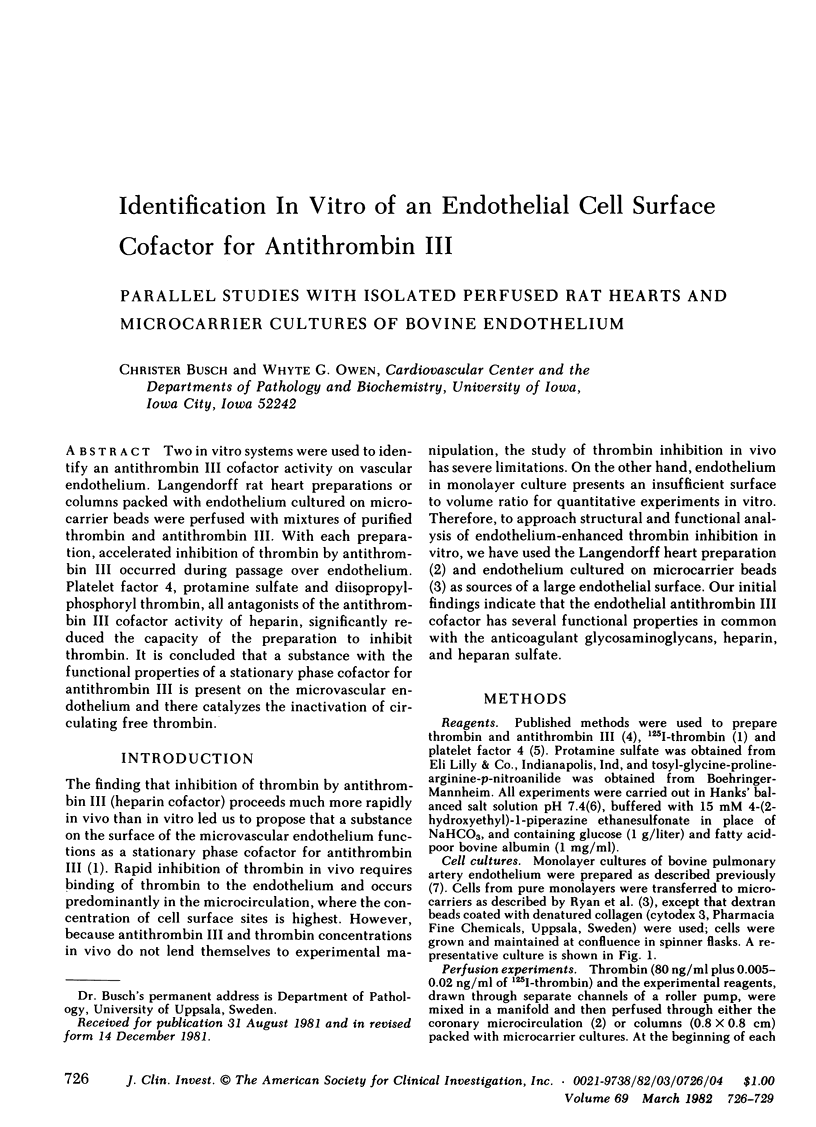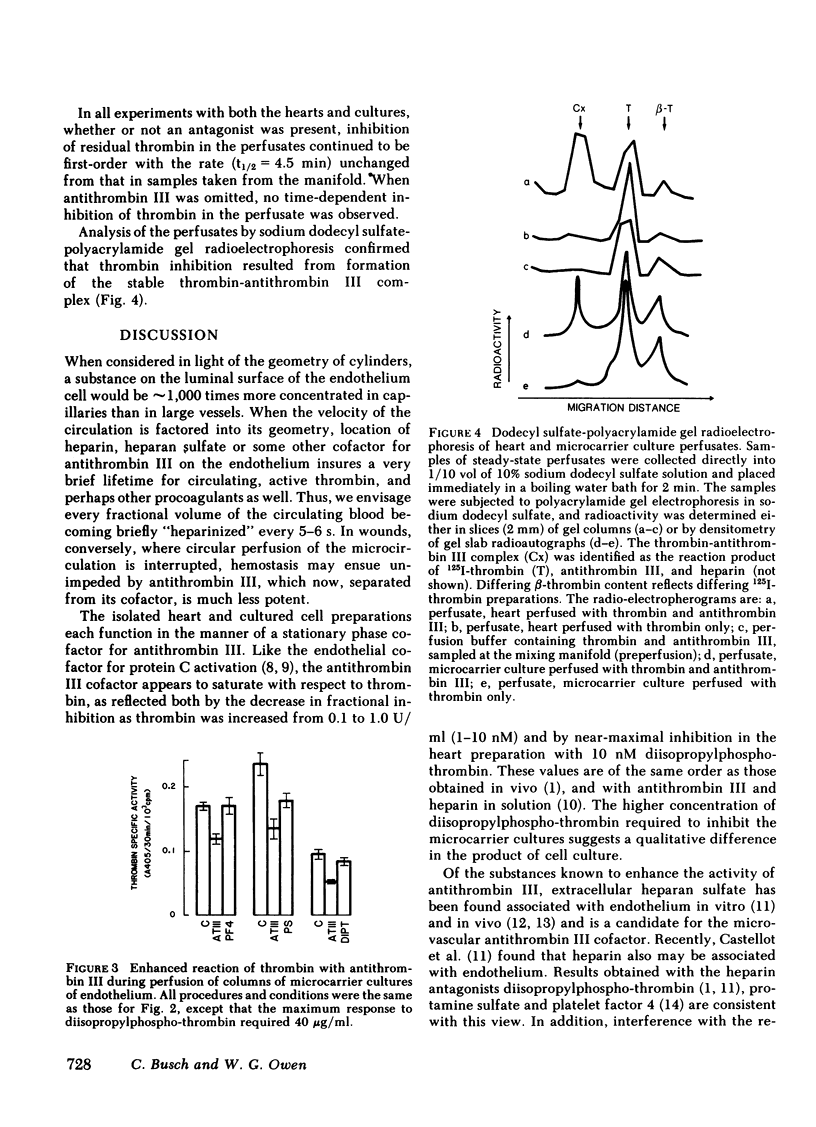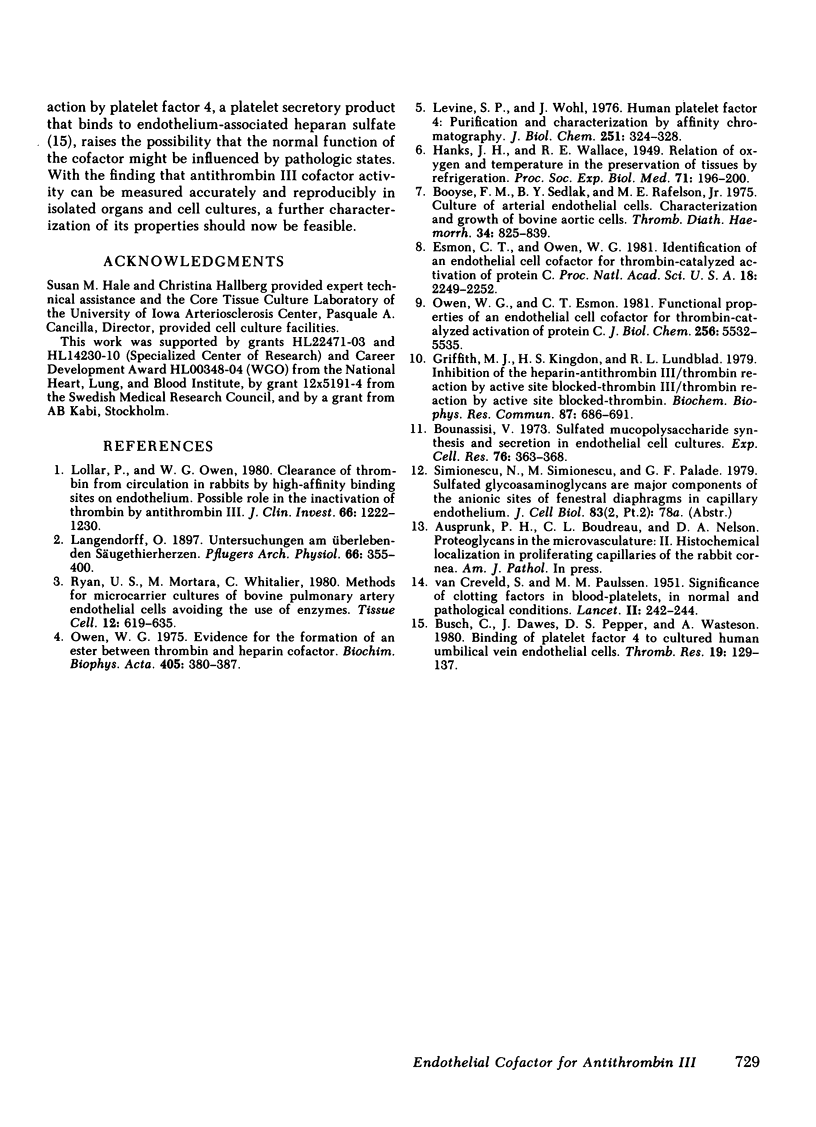Abstract
Two in vitro systems were used to identify an antithrombin III cofactor activity on vascular endothelium. Langendorff rat heart preparations or columns packed with endothelium cultured on microcarrier beads were perfused with mixtures of purified thrombin and antithrombin III. With each preparation, accelerated inhibition of thrombin by antithrombin III occurred during passage over endothelium. Platelet factor 4, protamine sulfate and diisopropylphosphoryl thrombin, all antagonists of the antithrombin III cofactor activity of heparin, significantly reduced the capacity of the preparation to inhibit thrombin. It is concluded that a substance with the functional properties of a stationary phase cofactor for antithrombin III is present on the microvascular endothelium and there catalyzes the inactivation of circulating free thrombin.
Full text
PDF



Images in this article
Selected References
These references are in PubMed. This may not be the complete list of references from this article.
- Booyse F. M., Sedlak B. J., Rafelson M. E., Jr Culture of arterial endothelial cells: characterization and growth of bovine aortic cells. Thromb Diath Haemorrh. 1975 Dec 15;34(3):825–839. [PubMed] [Google Scholar]
- Buonassisi V. Sulfated mucopolysaccharide synthesis and secretion in endothelial cell cultures. Exp Cell Res. 1973 Feb;76(2):363–368. doi: 10.1016/0014-4827(73)90388-1. [DOI] [PubMed] [Google Scholar]
- Busch C., Dawes J., Pepper D. S., Wasteson A. Binding of platelet factor 4 to cultured human umbilical vein endothelial cells. Thromb Res. 1980 Jul 1;19(1-2):129–137. doi: 10.1016/0049-3848(80)90412-0. [DOI] [PubMed] [Google Scholar]
- Esmon C. T., Owen W. G. Identification of an endothelial cell cofactor for thrombin-catalyzed activation of protein C. Proc Natl Acad Sci U S A. 1981 Apr;78(4):2249–2252. doi: 10.1073/pnas.78.4.2249. [DOI] [PMC free article] [PubMed] [Google Scholar]
- Griffith M. J., Kingdon H. S., Lundblad R. L. Inhibition of the heparin-antithrombin III/thrombin reaction by active site blocked-thrombin. Biochem Biophys Res Commun. 1979 Apr 13;87(3):686–692. doi: 10.1016/0006-291x(79)92013-8. [DOI] [PubMed] [Google Scholar]
- Levine S. P., Wohl H. Human platelet factor 4: Purification and characterization by affinity chromatography. Purification of human platelet factor 4. J Biol Chem. 1976 Jan 25;251(2):324–328. [PubMed] [Google Scholar]
- Lollar P., Owen W. G. Clearance of thrombin from circulation in rabbits by high-affinity binding sites on endothelium. Possible role in the inactivation of thrombin by antithrombin III. J Clin Invest. 1980 Dec;66(6):1222–1230. doi: 10.1172/JCI109973. [DOI] [PMC free article] [PubMed] [Google Scholar]
- Owen W. G., Esmon C. T. Functional properties of an endothelial cell cofactor for thrombin-catalyzed activation of protein C. J Biol Chem. 1981 Jun 10;256(11):5532–5535. [PubMed] [Google Scholar]
- Owen W. G. Evidence for the formation of an ester between thrombin and heparin cofactor. Biochim Biophys Acta. 1975 Oct 20;405(2):380–387. doi: 10.1016/0005-2795(75)90103-8. [DOI] [PubMed] [Google Scholar]
- Ryan U. S., Mortara M., Whitaker C. Methods for microcarrier culture of bovine pulmonary artery endothelial cells avoiding the use of enzymes. Tissue Cell. 1980;12(4):619–635. doi: 10.1016/0040-8166(80)90017-8. [DOI] [PubMed] [Google Scholar]
- van CREVOLD S., PAULSSEN M. M. P. Significance of clotting factors in blood-platelets, in normal and pathological conditions. Lancet. 1951 Aug 11;2(6676):242–244. [PubMed] [Google Scholar]



